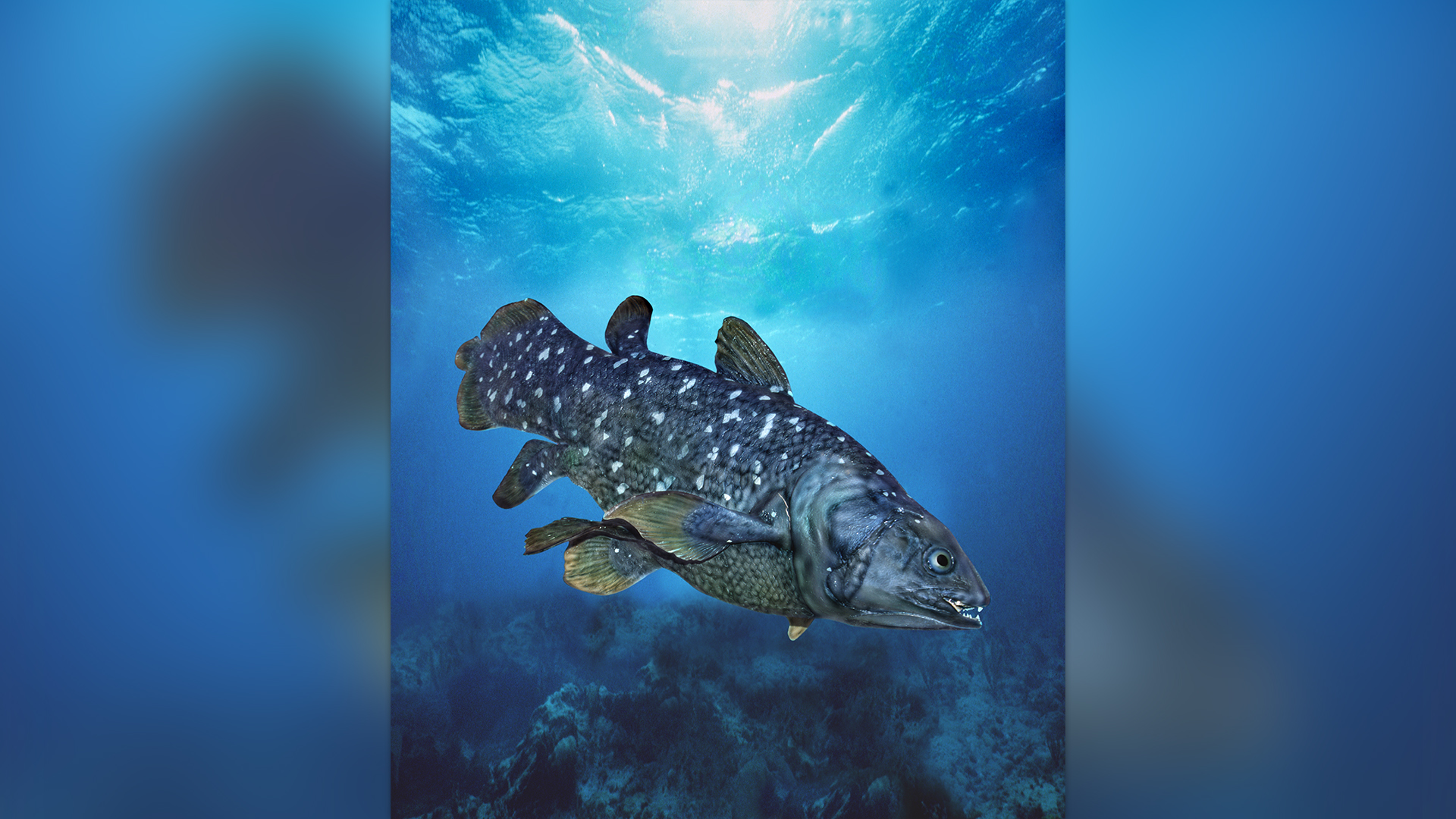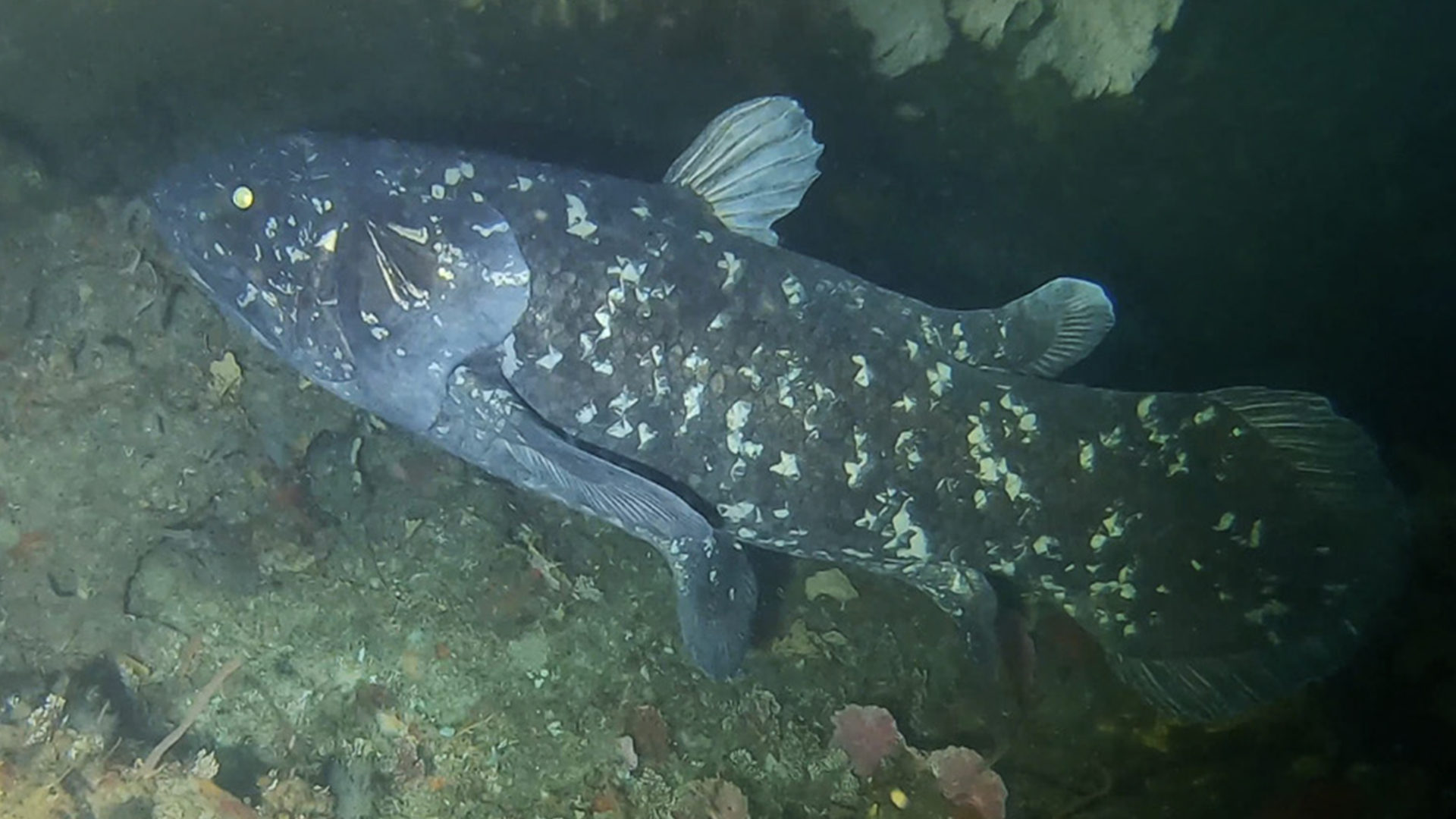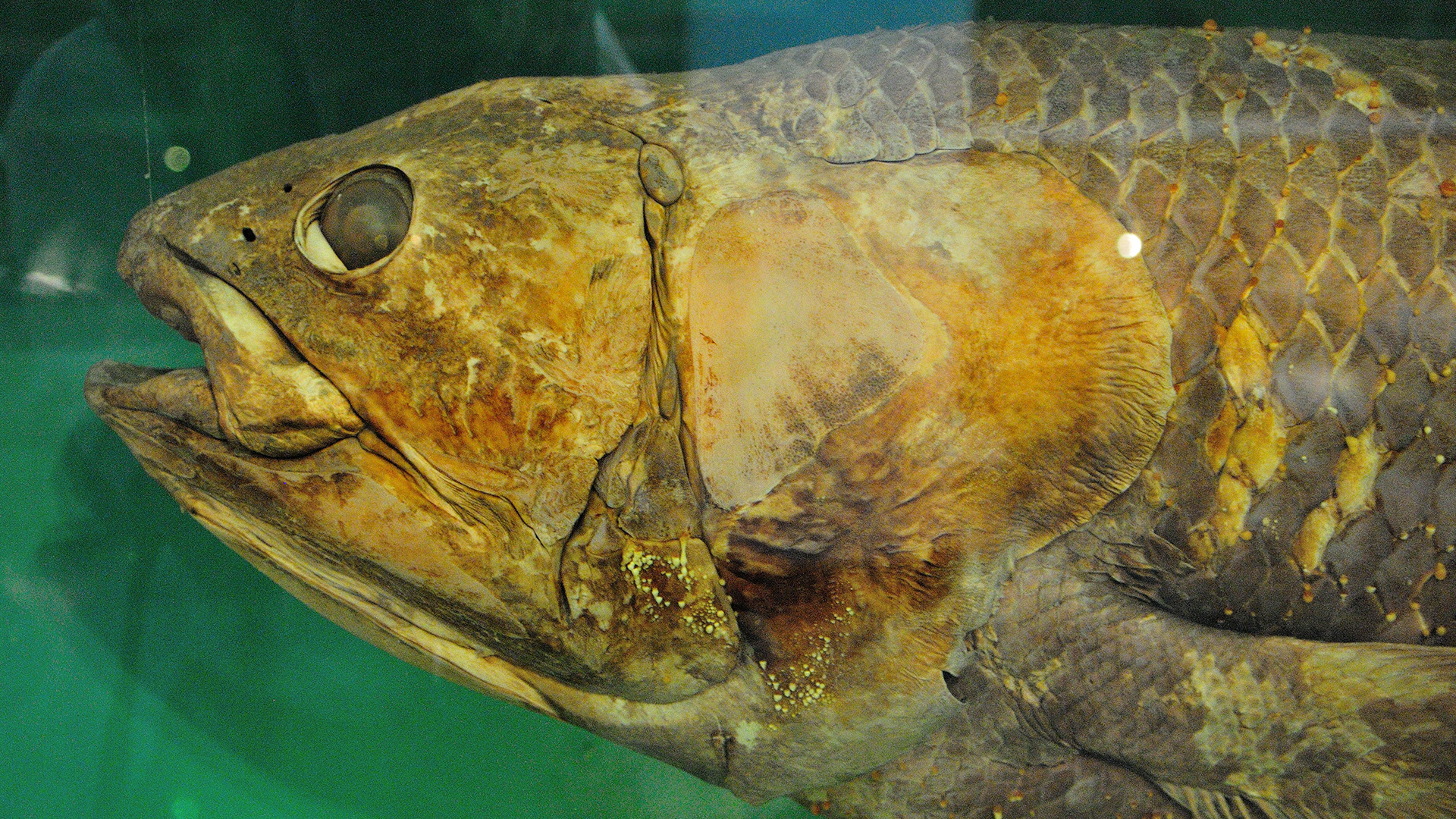West Indian Ocean coelacanth: The once-'extinct' Lazarus fish that can live for 100 years
Believed to have gone extinct at the time of the dinosaurs, the coelacanth has one of the longest gestation periods on Earth — and it can hunt in a headstand.

Name: West Indian Ocean coelacanth or African coelacanth (Latimeria chalumnae), known as 'gombessa' in the Comoros Islands
Where it lives: Off the east coast of Africa
What it eats: A variety of fish and cephalopods, including squid and cuttlefish.
Why it's awesome: Scientists thought all coelacanths went extinct over 65 million years ago — until the West Indian Ocean coelacanth was found by chance living off the coast of South Africa in 1938 . Coelacanths first appeared over 400 million years ago, but their fossil record stopped around the same time as the dinosaurs disappeared. Their unexpected reappearance means they are what is known as a Lazarus species.
These ancient bony fish spend their days hiding within caves and emerging at night to feed. They can grow up to 6.5 feet (2 meters) long and weigh up to 198 pounds (90 kilograms).
These big, primitive fish can also live for an incredibly long time.
Initial studies suggested coelacanths have a maximum lifespan of 20 years. But this finding was at odds with other aspects of the fish's life history, including slow metabolism and low oxygen absorption — traits normally associated with longevity. In 2021, researchers used an advanced aging technique to count calcified structures on coelacanth scales — like counting the growth rings on a tree — and found they could live up to 100 years.
Get the world’s most fascinating discoveries delivered straight to your inbox.
Related: Madagascar may be a secret stronghold for 'living fossil' fish
The study also found they are slow to reach sexual maturity, with males breeding from the age of 40 and females from age 58. They also have the longest gestation period of any known vertebrate, with pregnancies lasting five years.

That's not all. Coelacanths can also hunt while doing a headstand thanks to their special skeleton, with most of their bone mass in their head and tail.
In 1997, almost 60 years after the West Indian Ocean coelacanth's rediscovery, scientists found another coelacanth species in Indonesia. Known locally as 'raja laut' ('king of the sea'), it was given the scientific name L. menadoensis.

Megan Shersby is a naturalist, wildlife writer and content creator. After graduating from Aberystwyth University with a BSc (Hons) degree in Animal Science, she has worked in nature communications and the conservation sector for a variety of organisations and charities, including BBC Wildlife magazine, the National Trust, two of the Wildlife Trusts and the Field Studies Council. She has bylines in the Seasons anthologies published by the Wildlife Trusts, Into The Red published by the BTO, and has written for the BBC Countryfile magazine and website, and produced podcast episodes for its award-winning podcast, The Plodcast.
 Live Science Plus
Live Science Plus






